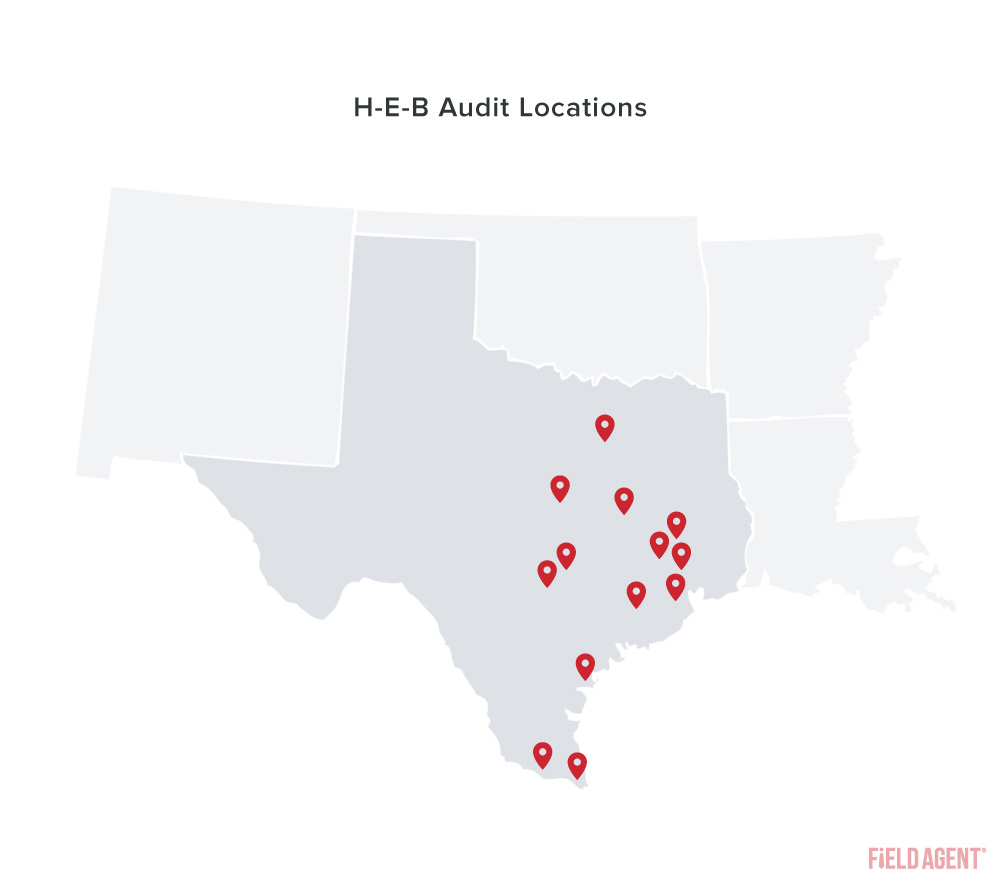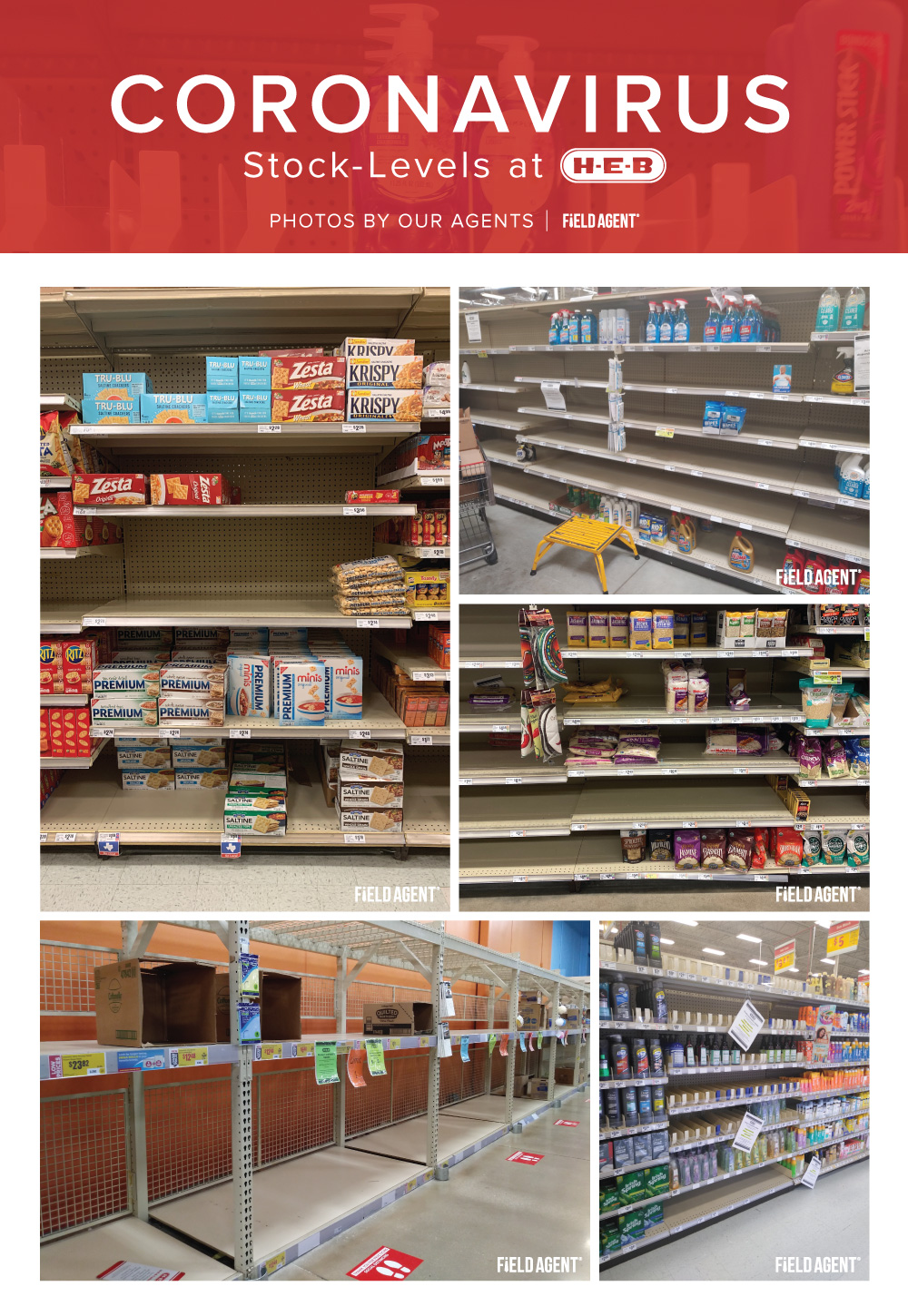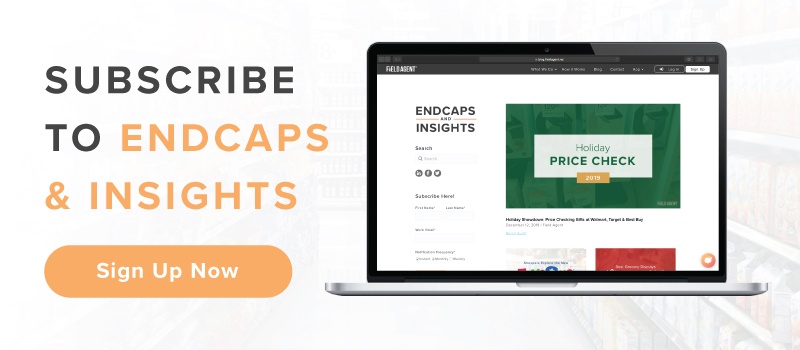
Coronavirus: Is H-E-B’s Out-of-Stock Rate REALLY Better Than Others?
Just this morning, the popular Retail Brew newsletter hit inboxes across the country with a lead story, "No Aisle Left Behind," about Texas-based grocery chain H-E-B and its proactive response to the coronavirus pandemic.
As the story in Retail Brew read:
“On Twitter, customers enthuse that H-E-B ‘has the ’rona in check.’ H-E-B shelves are well-stocked. Stores don’t have a Hunger Games atmosphere.”
The author even concluded with the following key “takeaway”: “It may feel too early to think about the next crisis. But when it comes, retailers should follow H-E-B’s lead by preparing far ahead and for the worst.”
Free Guidebook: 9 Coronavirus Challenges At-Retail...and How to Overcome Them
This prompted a question for those of us at Endcaps & Insights: Is the premise of the story sound? In the wake of the coronavirus outbreak, is H-E-B really outperforming other retailers on out-of-stocks (OOSs)?
To shed light on the situation, this afternoon we ran an OOS audit of 20 H-E-B stores.
Shedding Some Light: Out-of-Stocks at H-E-B
Endcaps & Insights, powered by the Field Agent on-demand platform, deployed agents to 20 different H-E-B stores in Texas.

All 20 audits were collected within a two-hour window, 2-4 p.m., on March 30, 2020.
While at H-E-B, agents took photos of the following eight product categories:
- Hand soap (in pumps)
- Disinfectant wipes
- Toilet paper
- Bottled water
- Canned soup
- Unseasoned rice
- Saltine crackers
- Frozen pizza

If these categories look familiar to Endcaps & Insights readers, it’s because we audited the same categories between March 18-19 across 212 stores, 50 states, and 11 major retailers, giving us a fairly recent benchmark for understanding H-E-B’s OOS rates relative to others.
We should note, however, that in a constantly shifting retail environment like today's, a difference of 11-12 days (i.e., the time between our industry-wide audit and the H-E-B audit) can make a difference. Day and time (i.e., what day and at what time audits took place) can also affect results from one retailer and study to another.
Thus, the comparisons we draw below are meant to be only directional in nature.
While at H-E-B, agents reported one of the following stock-levels for each category:
- Completely/almost completely stocked (91-100% stocked)
- Mostly stocked (61-90% stocked)
- About half stocked/half out-of-stock (41-60% stocked)
- Mostly out-of-stock (11-40% stocked)
- Almost completely out-of-stock (1-10% stocked)
- Completely out-of-stock (0% stocked)
The results are hot off the press. Check them out below.
Results: H-E-B, OOS, & COVID-19
As the chart below depicts, like other retailers, H-E-B's OOS rates on disinfectant wipes and toilet paper are very high. Indeed, in our audit, the company's OOS rate on disinfectant wipes exceeded the industry average from our previous audit.
On toilet paper, H-E-B bested the industry average by 22 percentage points, though the majority of audited H-E-B stores were still completely OOS on the high-demand item. As mentioned in the Retail Brew article, H-E-B president Craig Boyan acknowledged that the company didn't necessarily foresee the early, hyper-demand for toilet paper.
Altogether, however, the Field Agent platform found lower (i.e., better) OOS rates in 7-of-8 categories at H-E-B, with five categories posting a 0% OOS rate.
Worth noting: While H-E-B's OOS rate on hand soap was only 5%, the retailer was "almost completely OOS" (i.e., only 1-10% stocked) in the category at 65% of audited stores.

But let's break this down.
In our previous audit of 212 stores, we captured photos and stock-level info on 1,696 shelves (212 stores multiplied by 8 product categories). On average, 35% of these shelves were completely OOS (i.e., 0% stocked). Here were the retailers with the highest (worst) and lowest (best) post-outbreak, OOS rates:
Highest OOS rates
- Costco - 56% OOS rate
- Trader Joe's - 52%
- Sam's Club - 51%
Lowest OOS rates
- Target - 23% OOS rate
- Kroger - 28%
- Whole Foods - 30%
So how does H-E-B compare when you slice the data this way?
In all, 22% of shelves audited at H-E-B (N = 160) were completely OOS. That's good enough for first place among 12 total retailers audited, though, it should be stressed, neck-and-neck with Target (23%).
So, in conclusion, yes, this audit suggests H-E-B is the top-performer when it comes to out-of-stocks in the midst of an epidemic. At the same time, H-E-B customers, like customers of practically every other retailer, are facing plenty of OOSs and/or critically low stock-levels on the items in highest demand.
To sum up: Although H-E-B is leading the pack, the individual members of the pack are more similar than they are different.
For even more discussion about retail in the coronavirus age—and well beyond—be certain to subscribe to Endcaps & Insights (below).
Subscribe to Endcaps & Insights
Endcaps & Insights is where retail headlines come to life through insights, photos, and video. Subscribe below to stay up-to-date on the latest happenings across the retail industry.

